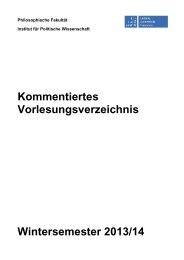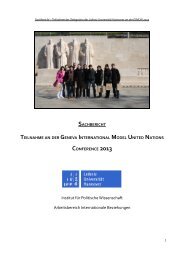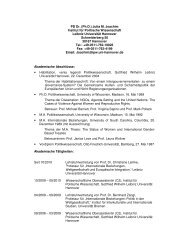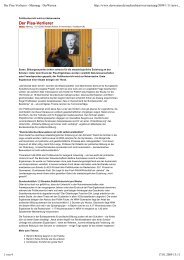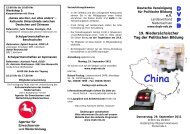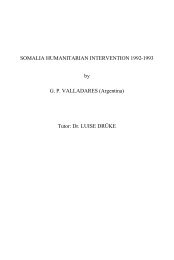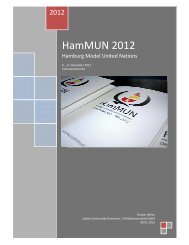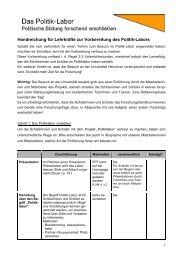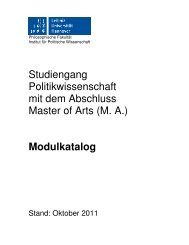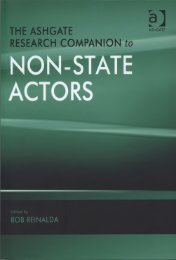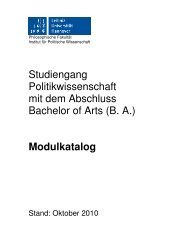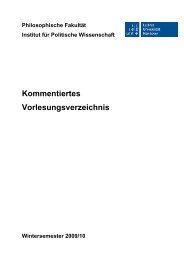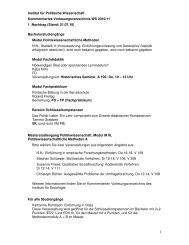Preventive Action for Refugee Producing Situations
Preventive Action for Refugee Producing Situations
Preventive Action for Refugee Producing Situations
You also want an ePaper? Increase the reach of your titles
YUMPU automatically turns print PDFs into web optimized ePapers that Google loves.
96 Chapter 3<br />
2. No right of return to Vietnam<br />
So far, the Vietnamese authorities have regarded those whom they wished to<br />
see leave and those who attempted or have succeeded in fleeing as enemies of<br />
the state, unwanted at home. Their refusal to readmit anyone who left the<br />
country clandestinely has given hope to Vietnamese who decide to escape that<br />
once they make it out alive to a country of first refuge, nothing can stop them<br />
on their way to the "golden West."<br />
The 1975 precedent of a voluntary return of 1,500 persons from Guam to<br />
Vietnam - most of whom were detained on arrival, and some of those executed<br />
- left a bad memory in the minds of many Vietnamese. With these memories<br />
in mind, most Vietnamese refugees have stated that they would not consider<br />
returning home anyway, unless substantial political changes occur. 212<br />
Many Vietnamese had hopes of being able to benefit from the OPD<br />
Program, but not all met the program's criteria. Those who did suffered<br />
various kinds of reprisals - losing work, food rations, or good education<br />
lated by the <strong>Refugee</strong> Act of 1980. Be<strong>for</strong>e 1980, entry into the USA was achieved on<br />
the basis of legislation contained in Section 212(d) of the Immigration and Nationality<br />
Act of 1952, as amended, which permitted the Attorney General to authorize the<br />
issuance of a "parole" (conditional entrance) to those refugees deemed qualified.<br />
Under this "parole" system four categories, which were defined to establish priorities<br />
among those qualifying <strong>for</strong> admission into the USA: Category I: Persons seeking<br />
reunification with immediate family members in the USA; Category II: Persons who<br />
had been closely associated with, or employed by, the USA during the Vietnam war;<br />
Category III: Persons who had served in the military or civil administration of their<br />
own government during the War; and Category IV: Persons warranting special<br />
humanitarian considerations. See Citizens Commission Report, p. 9. The <strong>Refugee</strong> Act<br />
of 1980, however, provides a permanent and fair framework <strong>for</strong> admitting refugees<br />
according to the refugee status definition of the 1951 Convention. See Edward M.<br />
Kennedy, "<strong>Refugee</strong> Act of 1980," International Migration Review, 15, Nos. 1-2,<br />
(Spring-Summer 1981), p. 155. 212 In the turmoil of the evacuation in April 1975, a<br />
few hundred people were among the evacuees in Guam, and were there<strong>for</strong>e given a<br />
ship to sail back to Vietnam without a previous agreement with the authorities. Their<br />
fate has never been confirmed, but the rumors about what happened to them are still<br />
vivid in the memories of many Vietnamese. Personal interview with Shephard<br />
Lowman, a <strong>for</strong>mer U.S. Foreign Service Official who was directly involved in the<br />
evacuation operation, 19 August 1988. For the evacuation to Guam from Vietnam,<br />
see, G.S. Mom-son and Felix Moos, "Halfway to Nowhere: Vietnamese refugees on<br />
Guam," in Art Hansen and Anthony Oliver-Smith, eds. Involuntary Migration and<br />
Resettlement: The Problems and Responses of Dislocated People (Boulder: A<br />
Westview Special Study, 1982), pp. 49-68.<br />
Analytical Discussion 97<br />
<strong>for</strong> the children - when they applied <strong>for</strong> an exit visa under the OOP. A<br />
number of these people had made arrangement <strong>for</strong> their future lives in the<br />
West. If they failed to qualify <strong>for</strong> the OOP, many of those not permitted<br />
rejected to leave legally chose clandestine escape. Usually, their kin suffered<br />
serious reprisals <strong>for</strong> the escape of their relatives and <strong>for</strong> applying to<br />
join them abroad. Since normal emigration from the country was impossible,<br />
those left behind often themselves sought to escape at the next opportunity.<br />
3. Absence of screening and the impossibility of voluntary repatriation<br />
The absence of screening escapees <strong>for</strong> refugee status seems to have encouraged<br />
a substantial number of Vietnamese to risk escape. Looking at the<br />
genesis of this situation, we find the following antecedents. In 1975 the<br />
United Nations General Assembly had endorsed the Executive Committee's<br />
view that "unanimously recognized the need <strong>for</strong> continued humanitarian<br />
assistance resulting from events in the Indo-Chinese Peninsula." 213 It further<br />
urged the international community to strengthen its support of UNHCR's<br />
ef<strong>for</strong>ts in this regard. With this broad mandate, UNHCR had a range of<br />
options <strong>for</strong> its actions, including the choice of whether or not to screen<br />
those arriving in first-asylum countries <strong>for</strong> eligibility of refugee status.<br />
As the program <strong>for</strong> assistance to Vietnamese displaced within the<br />
country was winding down, UNHCR, however, maintained its office there<br />
to "keep a foot in the door," and continued assisting Kampuchean refugees<br />
who had fled the Pol Pot regime 214 By June 1978, when the outflow from<br />
Vietnam reached 50,000 persons a month, the following factors probably<br />
held back UNHCR from introducing a screening procedure, even though it<br />
might have been valuable:<br />
_____________________<br />
213 See Official Records of the General Assembly, Thirtieth Session, Supplement<br />
No. 12 A (A/10012/Add.l), chap. IV; Thirtieth Session, Third Committee,<br />
2161st meeting, para. 1-10, and Thirtieth Session, Supplement No. 12 A<br />
(A/10012/ Add.l), para. 121, in UN doc GA res. 3455 (XXX). "Humanitarian<br />
assistance to the Indo-Chinese displaced persons," 9 Dec. 1975.<br />
214 In 1978, the assistance amounted to some US $700,000; in 1979, $3.5<br />
million; and in 1980, a further $10.2 million. Some in UNHCR considered<br />
this the price of the Orderly Departure Program, Kumin, pp. 45-46.



